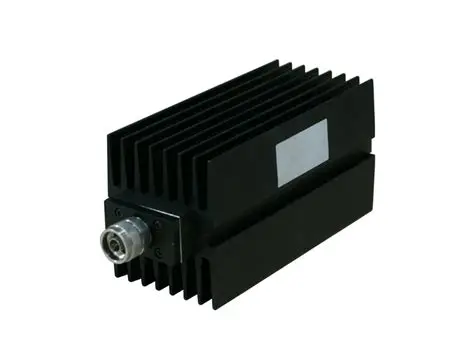Introduction
In the world of wireless communications, test & measurement, and RF system design, maintaining optimal signal strength is critical. RF attenuators play a vital role in controlling signal levels, preventing overload, and ensuring accurate measurements across a wide range of applications. These passive components are essential for engineers working with 5G networks, satellite communications, radar systems, and laboratory equipment.
This article explores the fundamentals of RF attenuators, their key benefits, different types available, and how they contribute to system performance in various industries. By understanding their functionality and applications, professionals can make informed decisions when selecting attenuators for their specific needs.
Understanding RF Attenuators
RF attenuators are electronic devices designed to reduce the power level of an RF signal without significantly distorting its waveform. They work by absorbing a portion of the signal energy and dissipating it as heat while allowing the remaining signal to pass through at a controlled, reduced level. The amount of signal reduction is measured in decibels (dB), with common attenuation values ranging from 1 dB to 40 dB or more.
Attenuators maintain signal integrity by providing precise impedance matching, typically 50 or 75 ohms, to prevent reflections that could degrade system performance. They come in various forms, including fixed, variable, and programmable models, each suited for different applications. Fixed attenuators offer a set amount of attenuation, while variable versions allow manual or electronic adjustment of attenuation levels. Programmable attenuators provide computer-controlled precision for automated test systems.
Key Applications Across Industries
The versatility of RF attenuators makes them indispensable across multiple sectors. In telecommunications, they help prevent receiver overload in base stations and ensure proper signal levels in 5G networks. Test and measurement laboratories rely heavily on attenuators to protect sensitive equipment from high-power signals during device characterization and compliance testing.
Satellite communication systems use attenuators to balance signal levels between ground stations and orbiting satellites. Radar systems employ them to control transmitter power and protect sensitive receiver components. Even in consumer electronics, attenuators play a role in optimizing signal paths for devices like set-top boxes and WiFi routers.
Military and aerospace applications demand rugged attenuators that can withstand extreme environments while maintaining precise signal control for radar, electronic warfare, and communication systems. The medical field utilizes specialized attenuators in MRI machines and other diagnostic equipment where precise RF signal management is crucial.
Technical Considerations and Selection Criteria
Choosing the right attenuator requires careful consideration of several technical parameters. Frequency range is paramount, with different attenuators designed for specific bands from DC to millimeter-wave frequencies. Power handling capability must match or exceed the maximum expected signal power in the system to prevent damage.
Insertion loss and flatness across the frequency band affect signal integrity and must be minimized in critical applications. Temperature stability becomes important in outdoor or harsh environments where component performance might vary with thermal changes. For variable and programmable attenuators, switching speed and control interface options (GPIB, USB, Ethernet) may influence selection for automated systems.
Connector types (SMA, N-type, BNC) and form factors (surface-mount, coaxial, waveguide) should match system requirements. More advanced applications may require features like phase-matched attenuators for array systems or DC-blocking versions for certain test scenarios. Understanding these parameters ensures optimal attenuator selection for each unique application.
Future Trends and Innovations
The attenuator market continues to evolve with emerging technologies. The push toward 5G and millimeter-wave communications drives demand for higher frequency attenuators with improved performance. Miniaturization trends lead to smaller surface-mount attenuators for compact wireless devices while maintaining power handling capabilities.
Smart attenuators with built-in monitoring and control features are gaining popularity in IoT and smart city applications. Materials science advancements enable better thermal management and power handling in smaller packages. The integration of attenuators with other RF components into modular subsystems simplifies design and reduces footprint in complex systems.
As wireless standards advance and spectrum becomes more crowded, precision attenuators will play an increasingly important role in maintaining signal integrity and system performance across all industries that rely on RF technology.
Conclusion
RF attenuators may be small components, but their impact on system performance is substantial. From ensuring accurate test measurements to protecting sensitive receivers and optimizing communication links, these devices provide essential signal control across countless applications. As wireless technologies advance and systems become more complex, the role of precision attenuators will only grow in importance.


